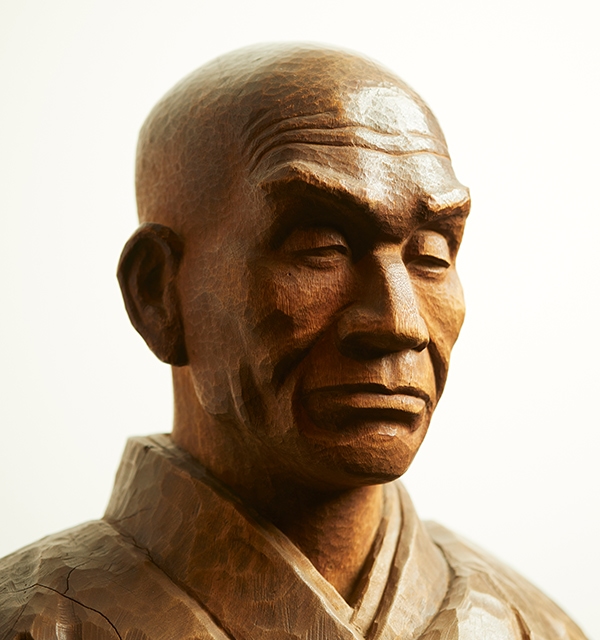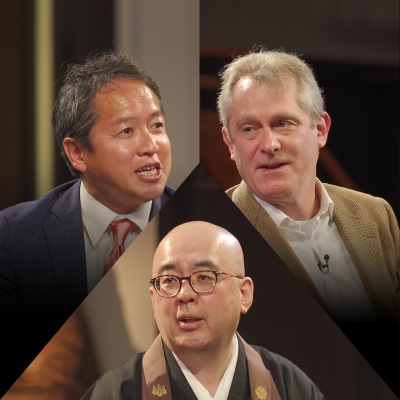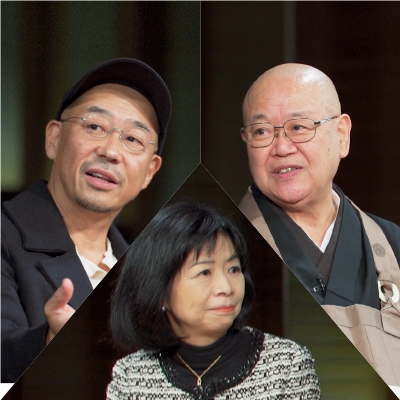
Thinking of Zen Teacher Kodo Sawaki, who started the lesson in Zazen at Komazawa University(4)
In Meiji 39 (1906), at the age of 27 Zen Teacher Sawaki (hereinafter abbreviated as Sawaki) , who came back alive from his military service in the Russo-Japanese War, had been shot during combat and was severely injured. The bullet, which had passed through from his neck to his mouth , severely wounded him in the tong tore off. Miraculously, he had a narrow and recovered, but it was true to expectations that he was unable to make conversation frequently after that.
Sawaki, who repatriated, returned to a Buddhist monk and began to study diligently once again. At the Kangaku-in*1 in Horyu-ji temple, he investigated the basis of the Buddhism, mainly Cittamātra*2 over six years. Indifferent to eating, Sawaki anyhow studied, valuing even his spare time. So it is said that his features looked around seventy years old, instead of being actually no more than thirty years old, caused by excessive study, malnutrition and insufficient sleep. Though he was the oldest student at Kangaku-in, he was the most energetic and had been relied on, called “Oyaji ,Oyaji” by everybody.
From his youth, Sawaki had never been defeated in competition with others regardless of any kinds of competitions namely quarrel, eating match, drinking match and so on. As for study, it was said that he devoted heart and soul in the same way up to feeling dizzy. He studied throughout the night, had a good sleep from 5:00 AM to 8:00 AM, and in the daytime studied in the school. That was how he spent his days. Nevertheless, Sawaki later reflected on himself that these hard workings he had done were just only for a competitive spirit in the end, derived from his unwillingness to be defeated by others.
By the way, as Sawaki was told to this extent,“Talking about Sawaki, Zazen and Buddhist robe”, he was a gentleman who also had a very profound knowledge of the Buddhist robe. When Sawaki was under the tuition of Abbot Ryoun Fueoka in Tamba, he had a chance to see Fueoka wearing a nyoho-e*3 which was stitched throughout with threads and dyed in dull brown like linen, and was different from the robes which average Buddhist monks usually wore. Sawaki felt somewhat piously and was attracted strongly and came to arouse his longing for the Buddhist robe. Later on he encountered a female Buddhist monk(nun) of Shingon-ritsu Sect, wearing a nyoho-e and came to make researches in the kesa of Venerable Jiun *4. As Sawaki called himself Kesa Sect, having made nyoho-e popular throughout Japan was pointed out as one of his meritorious deeds.
*1 Kangaku-in
the place for teaching the Buddhist doctrine (the respective teachings of each sect), built
by the major temple of each sect of the Buddhism
*2 Cittamātra (also Yogācāra) (Jpn. Yuishiki-gaku):
the Buddhist doctrine that all phenomena (objectivity) are the products of consciousness
(subjectivity)
*3 Nyoho-e
a kesa (Buddhist monk’s outer robe) suitable for the Buddha-Dharma. This is also called
funzo-e (a kesa made by sewing a collection of rags out of dust -heap used by Buddhist
monks and dyed in broken color (not a bright, attractive primary color)
*4 Venerable Jiun
1718–1805. Venerable Buddhist monk(Sonjya) of Shingon Sect of the late Edo era who
emphasized precepts and corrected disorganized manners regarding the kesa.
(Continues)
Origins Team, TSUNODA Tairyū

SPECIAL
ZEN,KOMAZAWA,MANAGEMENT
For our 5th discussion in this series we welcomed guest participant Mr. David Atkinson, CEO of Konishi Decorative Arts and Crafts, for a three-way dis・・・
2020.08.07

SPECIAL
ZEN,KOMAZAWA,MOVIE
For our fourth interview we welcomed film director Tatsushi Ōmori as our guest, and together with Komazawa University Chancellor Seishi Nagai and Prof・・・
2020.03.05

